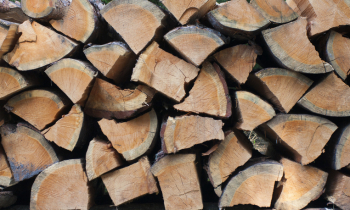Unlocking The Potential of Seasoned Wood
The success of your wood-burning experience hinges on the quality of your firewood. Seasoned wood – firewood that's been dried over time – holds the key. As moisture content drastically drops, usually between 12-36 months, your wood transforms into a highly efficient fuel. Remember, hardwoods like oak may require longer seasoning compared to softwoods.
Using wood with a moisture content below 20% ensures optimal heating and reduces creosote emissions. Contrastingly, fresh, unseasoned wood might have a moisture content soaring up to 80%, compromising the performance of your stove and potentially damaging it.
Choosing The Right Wood: A Quick Guide
Your choice of wood can dramatically influence the heat output and burn duration:
-
-
- Apple: High heat, slow burn, needs thorough seasoning, often priced higher.
- Ash: Steady burn, good flame, shorter seasoning needed.
- Beech: Hot, clean burn but demands longer seasoning.
- Birch: Quick burn, ideal when mixed with slow-burning wood.
- Cedar: Perfect for starting a fire, lights easily.
- Cherry: Moderate heat, ideal when seasoned.
- Douglas Fir: Slow-burning softwood, highly popular.
- Elm: Lower heat output, minimal flame.
- Hickory: High heat, long-lasting flames.
- Maple: Slow and steady burn.
- Oak: Popular choice, requires extensive seasoning.
- Pine: Good for kindling, watch out for soot.
- Spruce: Best used as kindling.
- Sycamore: Good for initiating fires.
- Tamarack: A softwood exception that burns hot.
-
Remember, the wood available to you might differ based on your locale, so understanding regional variants is crucial.
Mastering The Art Of Log Loading
The size of the logs, as well as their arrangement, plays an instrumental role in the efficiency of your wood stove or insert. While larger logs ensure prolonged burns, having a mix of sizes aids in easy ignition and filling up gaps for a full load.
The Road To A Perfect Fire
Navigating modern EPA-certified wood units can be tricky for even seasoned users. To get the best out of your unit:
-
-
- Use black and white newspapers.
- Ensure adequate airflow.
- Start with smaller pieces, then graduate to larger logs.
- Keep the air control and bypass open initially.
- Load the firebox judiciously, ensuring optimal wood arrangement.
-
Patience is key here. Let the unit warm up, adjust settings accordingly, and then indulge in the magic of a perfectly burning wood fire.
In conclusion, with the right knowledge and techniques, every wood-burning session in your stove or insert can be an enriching experience. So, stock up on the right wood, master the loading technique, and enjoy the captivating allure of a blazing fire!





